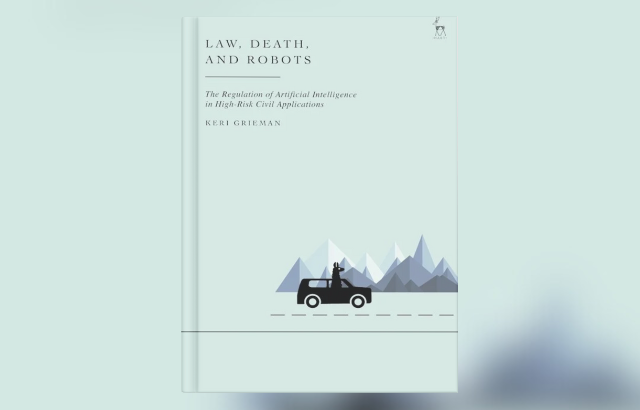Can the Law Keep Up with AI? Dr Keri Grieman’s Latest Book Tackles High-Risk AI Regulation
A comprehensive look at how law can evolve to keep pace with artificial intelligence in critical sectors like healthcare and autonomous vehicles.

Law, Death, and Robots: The Regulation of Artificial Intelligence in High-Risk Civil Applications, an innovative new book by Keri Grieman, a leading researcher in law and technology. Published today by Bloomsbury, the book tackles the pressing legal and regulatory challenges posed by artificial intelligence (AI) in high-risk civil applications.
AI’s rapid evolution offers extraordinary opportunities, from automated vehicles to medical breakthroughs, yet its potential for harm raises urgent concerns about liability and regulation. Can current legal frameworks keep pace with this fast-moving technology? Grieman’s book provides a comprehensive exploration of how the law can evolve to manage AI safely and effectively while promoting life-saving innovation.
The book explores how AI can both save lives and pose serious risks. Drawing from real-world examples, Law, Death, and Robots discusses AI regulation in critical sectors such as healthcare and autonomous vehicles, presenting an in-depth analysis of liability in the event of accidents and failures. Through a comparative study of legal frameworks in the EU, UK, USA, and Singapore, Grieman offers a unique, jurisdiction-agnostic blueprint for regulating AI to ensure it is prepared for future technological advancements.
“With AI advancing at an unprecedented pace, there is an urgent need to rethink how we regulate these technologies,” says Grieman. “This book bridges the gap between technologists and regulators, offering tools to ensure AI can reach its full potential safely.”
This essential book is set to become a key resource for policymakers, legal professionals, technologists, and academics concerned with the intersection of law, technology, and AI.
Law, Death, and Robots: The Regulation of Artificial Intelligence in High-Risk Civil Applications, is available in hardback and eBook from publisher Bloomsbury.